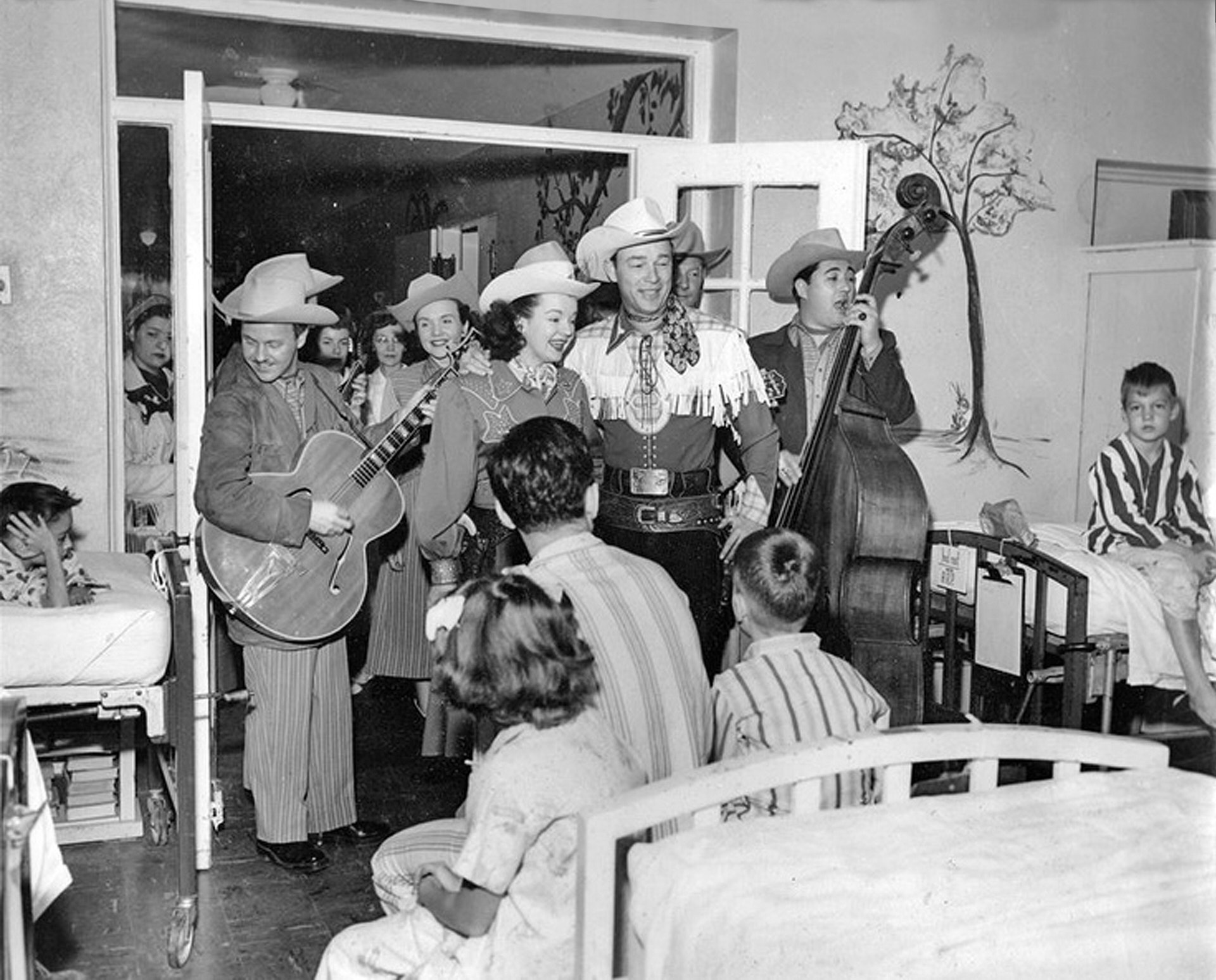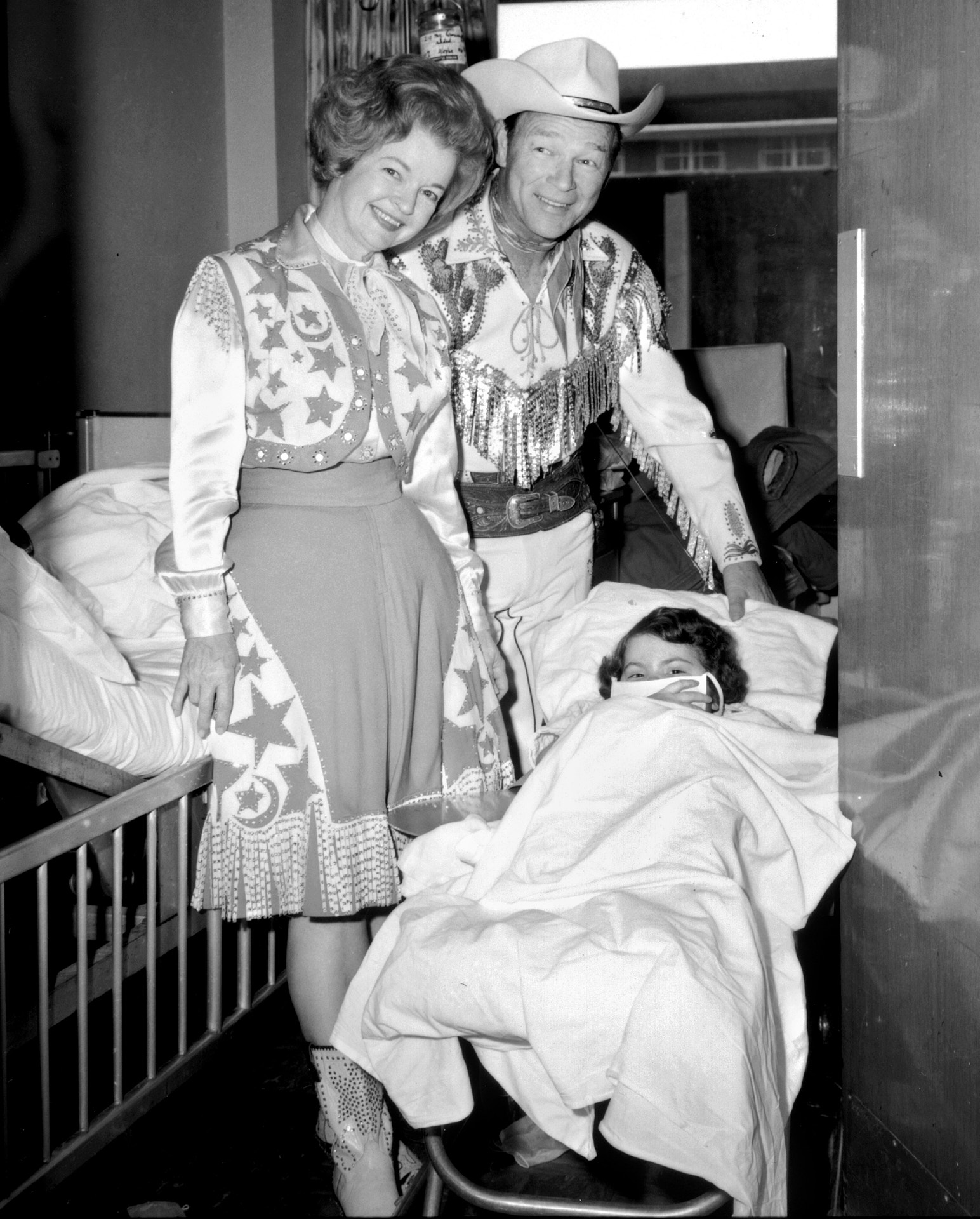
The world is now facing a very difficult time, but for my generation, this is not the first instance when we’ve had to deal with this kind of adversity in our lifetimes. Looking back, some of us may remember when our world was turned sideways by another virus. This is a story of how our Toluca Lake community and our country dealt with similar harsh conditions and prevailed.

In 1949, four years after the end of World War II, it seemed everyone was planning for a big road trip. For my family, this meant Route 66 to visit relatives in Tennessee and beyond, in Granddad’s new four-door Buick. Just Mom, Granddad and me — Dad was busy at the studio and couldn’t make the trip. Joanne, the girl next door, and her folks were going to visit relatives in New York. Our two families planned to start out on July 4, caravan to Denver and then go our separate ways.
I had a whole month of summer fun before heading off on this great new adventure. There were westerns to be seen, bikes to be fixed, rival cowpokes to be dealt with and good times to be enjoyed. For most, this meant the North Hollywood Park swimming pool, or for some of us, the Lakeside Golf Club pool, followed by a cowboy matinee at the El Portal or Valley theaters on Lankershim Boulevard. The pools were great; the lifeguards were neighbors, not much older than some of the big kids in the water, so a little horseplay wouldn’t get you banished for life. For me and my friends at that moment in our lives, girls were just a minor nuisance, someone to ignore or tease — but not too much, or you’d hear about it from your dad, or the girls’ big brothers, who were probably ignoring or teasing your older sister if you had one. So went the lazy days of early summer.

But, by late June, something peculiar was happening. I kept hearing strange new words being whispered. My mom was always on the phone, many times crying along with her friends. It seemed to everyone that the whole world sort of stopped on a hot, humid day in 1949. Infantile paralysis had struck, and struck hard.
No one was allowed out of the house; pools were drained and padlocked. Movie theaters were closing one by one. All the local grammar schools were hit — Toluca Lake, Rio Vista and St. Charles schools added way too many to the list of the infirm. Newly polished bikes grew dusty hiding in the garage. Distrust, even among friends, was thick in the air. This deadly polio epidemic, which was to last for several years, would take some of the best and brightest of our generation.

Joanne, my neighbor on Valley Spring Lane, was the first of several in our little area of Toluca Lake to be stricken. A high fever followed by general muscle weakness were the first signs that sent parents into panic. “You get it, and you never get better,” were the words of the doomsayers. “You’ll always be crippled” — just what frantic families wanted to hear.
But there was a ray of light offering hope to the sick children and their families. An Australian nurse, Sister Elizabeth Kenny, teamed up with Los Angeles’ Children’s Hospital in Hollywood and came up with a plan to help get these kids, and kids from all over the world, back on their feet again.
In the beginning, Sister Kenny’s methods were not shared by many in the medical field, but she knew that “her” kids would respond. And they did! Hot whirlpools in a metal pool called a Hubbard tank, physical therapy all day, every day, and hot packs on the affected limbs finally started to get results. The language uttered by the kids, who were in such pain, would have shocked many of the parents. But the therapists just told the kids to stick their heads under the water and yell all they wanted. And boy, how they yelled!
Joanne had both ambulatory and respiratory paralysis, so for a time, she was in an iron lung that breathed for her. Always a fighter, more than once she’d yell, “I hate lying on my back looking at the world through a mirror … everything’s backwards!” Joanne and the rest of the kids worked hard, and by the holidays, hope was in the air.

Christmas was coming, and every floor was decorated just like home. It wasn’t home; it was still just a smelly old hospital, but big plans were brewing. The kids knew something was up. The “old timers” said it was just going to be Santa Claus, making his yearly visit. But not this year! Instead, Christmas Eve started with a song. Out on the lawn, the children and staff could hear the voices of the St. Charles choir singing “Jingle Bells,” led by Paul Salamunovich, who went on to lead the choir for the next 60 years.
The children who could make it to the windows shouted to the rest, telling them of the wondrous sights below. There, like a dazzling life-size Christmas display in the windows of Bullock’s downtown department store, were at least a dozen real horses, with wire and papier-mâché antlers tied to their heads, like reindeer! They were pulling a huge wagon filled with brightly wrapped presents. Leading this remarkable sight were more western stars than the kids had ever seen, even in the movies.

“There’s Roy, Dale, Hoppy, Wild Bill, Smiley, Monte, Clayton, Duncan, Johnny Mack, Rocky, Fightin’ Bob Steele, Don ‘Red’ Barry, Max Terhune, Jimmy Dodd and Eddie Dean,” called out the excited children, some of whom were leaning precariously out the windows, as their frail friends held them fast by the heavy steel braces on their legs and leather belts around their waists.
Within moments, the doors of the hospital were thrown open and the voices of cowboys and kids could be heard melding in the halls. Each floor had stars passing out presents to the kids, as well as autographs to the doctors and nurses. Roy Rogers and Dale Evans started on the top floor and worked down, stopping at each bed to say howdy and pass out six-shooters, watches, Roy Rogers Riders Club membership cards and comic books. The rest of the stars did the same. Soon, the melodious voices of Roy, Dale, Monte Hale and Eddie Dean were leading everyone in “Silent Night” on the hospital speaker system. Those scratchy old speakers never sounded so good. This was truly a wondrous moment.
Roy and Dale were the first to stop on Joanne’s floor. Dale gave each girl a beautiful Dale Evans cowgirl doll, dressed in light green. She hung Joanne’s on the edge of her mirror, so it could always be seen.
Roy went to a young boy standing shyly by his bed and said, with a sly wink of recognition, “Say, pardner, your dad says you’re doing pretty well, so why don’t you round up all your pals and go on over to the window, and when I ride out on Trigger, I’ll wave to you and all your buddies.” And with that, Roy gave the youngster a real, new-in-the-box Roy Rogers wristwatch with a genuine leather strap, plus his very own Roy Rogers Riders Club membership card, #331.

All too soon the day was ending, but what a day! To a lot of these kids, this Christmas season was a turning point in their recovery. It sure was for the boy with the Roy Rogers wristwatch. Without help, he locked the knee on his leg brace and clomped over to the window to wave goodbye to all his friends, especially Roy, Dale, Trigger and Buttermilk.
The young boy, already well on his way to recovery, started getting even better, seemingly right from that very day. Soon, he was home, walking with just a knee-high shoe brace, and by the next school year he could get around really well with only a funny-looking pair of heavy, high-top black shoes. One was built up on the outside edge with a small metal brace up his leg, forcing his left leg inward.

Even those soon found a place in the back of his closet when the new girl down the street asked him to go roller-skating one bright, sunny day. This was his first of many, many lessons in the powers of female persuasion. He realized you couldn’t clamp skates on those ugly, black, built-up shoes. But at that moment, he didn’t have a real pair of shoes, so he “borrowed” a pair of his dad’s brogans and stuffed the toes with socks so they would sort of fit. Sadly, to this day, I still can’t skate worth a darn.
Oh, by the way, Joanne’s granddaughter still has the beautiful Dale Evans doll that was given to her grandmother so many years ago. And I still have my like-new, in-the-box, real Roy Rogers wristwatch with the genuine leather band and my treasured Roy Rogers Riders Club membership card, #331.
Many decades later, Roy and I reminisced about those dreadful days so long ago. And I never stopped thanking him for all that he and the rest of the cowboy heroes of our youth had done for countless kids like me as they visited children’s hospitals across the country.
And in case you’re wondering, you’ll still know it’s me, even today, if you hear me walking down a quiet tile hallway; I’m told I have a real distinctive, cloppity gait. That said, Sister Kenny and Children’s Hospital did their job, and did it well. Perhaps the good Sister gave me and all those remarkable kids she helped their first taste of God’s loving persuasion.

